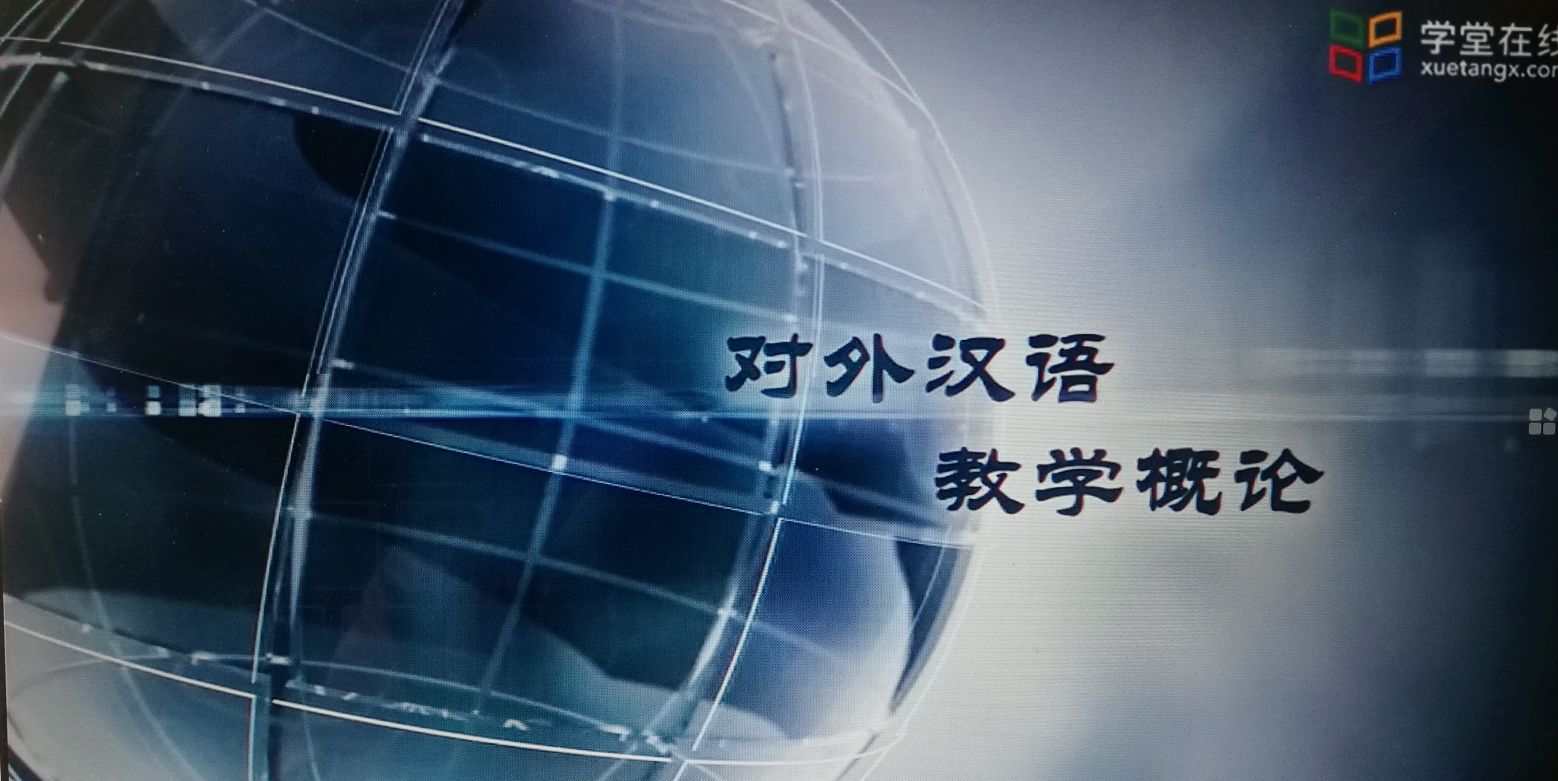
当前课程知识点:Innovation and Creative Thinking (创新与创意思维) > 13. Case Study (Selective)个案研究(选学) > Case Study: Keep-fit formula for Children (学童Keep-Fit方程式) > Measures of creativity and creative thinking
返回《Innovation and Creative Thinking (创新与创意思维)》慕课在线视频课程列表
Measures of Creativity and Creative Thinking
创意和创意思维的测量
Welcome back to the course Innovation and Creative Thinking. This session will look at measures of creativity and creative thinking.
欢迎回到创新与创意思维课程,这节课将要学习创意和创意思维的测量。
How do we measure creativity that reflects froma movie,a piece of fine art, andthe work of a scientist? Let’s see what’s being done at present.
我们如何测量一部电影、一件美术品和科学家的工作所反映出来的创意呢?让我们一起来看看目前怎样做。
For movie, we may use length of run, money taken in at the Box, awards or reviews.
For art work, current auction price, museum display and frequency of reproduction in publications are common indicators.
For the work of a scientist, it’s very straightforward. We may count journal articles, citations and awards.
对于电影,我们可以用上映时间、票房收入、获奖和影评。
对于美术品,当前的拍卖价格、博物馆展览和出版物的复制频率是常用的指标。
对于科学家的工作,非常直截了当,我们可以计算期刊论文、引用情况和获奖。
The common feature appears to suggest creativity is measured through a collective judgement by a large number of people with expertise in the creative domain, and all are measures of exceptional levels of creativity, that is, the Big C, not individual’s little c.
它似乎提示了创意的共性特征是通过许多同一创意范畴的专家作出的集体判断来进行测量,而且所有都是测量超乎正常水平的创意,这便是大“C”,而非个人的小“c”。
Let’s do some thought exercises.
让我们一起做些思考练习。
Think of someone you know whom you think is particularly creative.
试想一个你认识的而且你认为很有创意的人。
Why do you think so?
为什么你会这样想?
Is it because of some distinctive behaviour, lifestyle or ways of talking?
是因为一些与众不同的行为、生活方式或谈话方式吗?
Is it because you’ve seen one of his or her creative works and you thought that it was creative?
是否因为你已经看到他/她的创意作品而且你认为它有创意?
Do you think the person would be considered creative by people from other countries and other cultures?
对来自其他国家和其他文化的人们而言,你觉得他们会认为这个人有创意吗?
Or is there anything uniquely from the culture of his or her country about creativity?
或者从他或她的国家来看,有没有一些关于创意的独特理解?
(Pause for 5 minutes)(暂停5分钟)
Have the thought exercises led you consider measures of individual’s creativity, the little c?
这些思考练习有没有让你开始思考个人创意的测量,也就是小“c”?
播视频 – Interview Question
I was once asked a very tricky question during a job interview and it hasn’t left me since:
我曾在求职面试中被问过一个非常棘手的问题,从此我也没忘记。
You are driving in your car on a stormy day. You passed by a bus stop and see three people waiting there.
你正在暴风雨天开车,经过公共汽车站时看到有三个人在那里等。
The first is the perfect woman of your dreams.
第一个是你梦想的完美女人。
The second is an old friend who once saved your life.
第二个是曾救过你生命的老朋友。
The third is a lonely old lady who looks really sick.
第三个是看起来病得很重的孤独老女士。
If you have only one seat in your car, who will you offer a ride to?
如果你的车上只剩下一个座位,你会给谁搭车?
Let’s think about it..
让我们想想...
This is a moral and ethical dilemma actually used as part of a job application.
这是一个伦理道德困境的问题,在申请职位时遇到的。
Do you pick up the old woman because she is in critical condition and you should save her first?
你是否会载那位老女士,因为她正处于危急状态,所以应该先救她?
Do you take the old friend because he once saved your life and this would be a perfect opportunity for you to pay him back?
你是否会载那位老朋友,因为他曾救过你生命,而这是报答他的绝好机会?
However, both choices leave you missing out the woman of your dreams.
但是,这两种选择都会让你错过梦想的女人。
The candidate hired (out of 200 applicants), however, had no trouble answering.
然而,被聘用的应试者(从200位申请者中)回答得毫不费力。
He simply said: “I would give the car keys to my old friend, let him drive the old lady to the hospital, and stay behind to wait for the bus with the woman of my dreams.”
他简单地说:“我会把车钥匙交给我的老朋友,让他把老女士载到医院,然后我留下来和梦想的女人一起等公车。”
His answer left me stunned!
他的回答让我惊呆了!
He completely changed my outlook and reminded me to always, “think out of the box!”
他完全改变了我的看法,并一直提醒我“跳出框架来思考!”
“Everyone is born with an instinct of success and ability to make it, but only the one who thinks outside the box succeeds.”
“每个人生来就有成功的本能和达标的能力,但只有那些能跳出框架思考的人才能成功。”
Remember
记着
“Big ideas come from forward thinking people who challenge the norm, think outside the box and invent the world they see inside rather than submitting to the limitations of current dilemmas”
“大的概念源于具有前瞻思维的人,他们跳出框框思考,发明他们内在看到的世界,而不是屈服于当前困境的局限”
“The limits of the possible can only be defined by going beyond them into the possible.”
“可能的限制只能通过超越它们来定义。”
Arthur C. Clarke
亚瑟C.克拉克
Inspired
启发
Psychologists have become interested in individual’s creativity since the World War II. In the early stage of development, many psychologists considered creativity was an integral part of our intelligence and were linked.
自第二次世界大战以来,心理学家开始对个人创意变得有兴趣。在发展早期,很多心理学家认为创意是智能的组成部分,二者互相联系。
In 1955, psychologist Joy Guilford rejected this hypothesis and developed the “Structure of Intellect” theory using a factor analytic technique to separate creative thinking skills from others including intelligence. As part of this model, Guilford identified two distinct forms of thinking. They are divergent thinking and convergent thinking.
1955年,心理学家乔伊·吉尔福特驳斥了这个假设,而且提出了智力结构理论,她利用因子分析技术将创意思维能力从其他能力包括智能中分离出来。作为这个模型的一部分,吉尔福特明确了两种不同的思维模式,它们是发散思维和聚合思维。
What we call the “gold standard” measure of creativity was developed by psychologist E. Paul Torrance building on the work of Guilford. The instrument, Torrance Tests of Creative Thinking, psychometrically measures divergent thinking, and other problem-solving skills.
被称为测量创意的“金标准”的工具是由心理学家艾利斯·保罗·托兰斯在吉尔福特的工作基础上发展而来的。这个工具,托兰斯创意思维测试从心理测量学角度测试了发散思维和其他解决问题能力。
The reliability and validity of the instrument have made Torrance internationally known, and in the psychological literature he is routinely called the “father of creativity research.”
这个工具的信度和效度使托兰斯享誉国际,而且在心理学文献中他常常被称作“创意研究之父”。
Torrance Tests of Creative Thinking are scored on four scales. They are:
One, fluency which is the total number of interpretable, meaningful and relevant ideas generated in response to stimulus.
托兰斯创意测试采用四个量表进行评分。它们是:
第一,流畅性,是指在对刺激反应过程中所产生的可解释的、有意义的而且相关联的想法的总数。
Two, originality which is based on each response compared to the total amount of responses from a specific group of test participants. Responses that are given by 5% of the group are unusual and 1 point will be scored while responses that are given by only 1% of the group are unique, 2 points.
第二,独创性,是基于个人反应情况与参加测试的特定人群的反应总数对比。反应数在该人群中5%的人能够做到,视为与众不同,可以得1分,然而若仅有1%的人能够做到,视为独特,可以得2分。
Three, flexibility which is based on the number of difference of categories of relevant responses.
第三,灵活性,是基于相关反应的种类的差异量。
Four, elaboration which is based on the amount of detail given in the response.
第四,精确性,是基于反应中的细节总量。
There are two parts in the Torrance Tests of Creative Thinking.
One, verbal. This part consists of five tasks: ask-and-guess, product improvement, unusual uses, unusual questions, and just suppose. For example, participants are shown a picture and asked to respond in writing. They might be shown a situation and allowed to ask questions, or asked to improve products, or simply respond to the prompt “just suppose”.
托兰斯创意思维测试包含两部分。
第一,语言。这一部分包括5项任务:提问和猜测、产品改进、超常运用、超常问题和仅为假设。例如,向参与者展示一幅图,要求书写作答。也可能向他们展示一个情境,允许他们提问题或要求改进产品,亦或根据提示的仅为假设进行简单作答。
Two, figural. This part consists of three tasks: picture construction, picture completion, and repeated figures of lines or circles.In picture construction, participants are given a kind of shape and they must make a picture out of the shape.
第二,图画。这一部分包括3项任务:图画构建、图画完成和重复图画的线条或圆圈。在图画构建阶段,给参与者一类形状,他们必须按既定的形状画一幅图。
In the picture completion task and the repeated figures task, participants are given 10 incomplete pictures or figures in which they must construct an image or picture.
在图画完成任务和图画重复任务中,给参与者10幅未完成的图画或图形,他们必须构建一幅图画或图像。
Having gone through the Golden Standard instrument, now we will move to explore other tools that are available for everyday use.
了解黄金标准工具后,现在我们将开始探索可以日常使用的其他工具。
Self Assessment Tests
自我评估测试
These tests fall within the category of personality tests of creativity, and many of these tests involve self assessments or self reporting of creativity. Participants respond to questions about how creative they feel, or whether they possess certain creative traits or attributes.
这些测试属于创意人格测试范畴,而且其中很多都涉及创意的自我评估或报告。参与者回答的问题与他们感觉自己有多少创意或是否具备某些创意的特质或特性有关。
Torrance together with her colleague Joe Khatena developed a self-assessment test called the Khatena-Torrance Creative Perception Inventory. It consists of the following two subtests:
托兰斯和她的同事乔·卡纳特共同开发了一项自我评估测试,叫做卡纳特-托兰斯创意感知量表。它包括以下两个子量表:
One, Something About Myself. It measures artistic inclination, intelligence, individuality, sensitivity, initiative and self strength.
Two, What Kind of Person Are You? It measures imagination, appeal to authority, self-confidence, inquisitiveness, and awareness of others.
第一,关于自我。它测量艺术倾向、智能、个性、敏感性、主动性和自我能力。
第二,你是哪类人?它测量想象力、呼吁权威、自信心、好奇心和对他人的觉察。
The Creative Achievement Questionnaire was developed by Carson, Peterson and Higgins in 2005.
创意成就问卷是由卡森、彼得森和希金斯在2005年编制。
Participants are asked to check off actual achievements in 10 separate domains of creative accomplishments , such as ‘My work has won a prize in an innovation exhibition.’
它要求参与者根据创意成就的10个独立维度来核对实际的成就,比如,“我的工作曾在创新展览中获奖。”
The 10 domains are visual arts, music, dance, creative writing, architectural design, humour, theatre and film, culinary arts, invention and scientific inquiry.In each domain, there are 7 different accomplishment items ranked by the level of achievement.
这10个维度分别是视觉艺术、音乐、舞蹈、创意写作、建筑设计、幽默、戏剧和电影、烹饪技术、发明和科学探索。每个维度有7个不同的成就条目,并根据成就水平排序。
The Runco Ideational Behavioural Scale was developed by Runco, Plucker and Lim in 2000. It asks participants to indicate how much they agree with 23 statements that reflects creative quality.
伦科观念行为量表是由伦科、普吕克和利姆在2000年编制。它要求参与者指出他们在多大程度上认同反映创意质量的23个陈述条目。
Some examples of these statements are:
这些陈述条目的例子是:
I have many wild ideas.
我有很多新奇的想法。
I think about ideas more often than most people.
我比大部分人思考想法多。
I enjoy having leeway in the things I do and room to make up my own mind.
我喜欢做事时有退路,并有空间可以自己拿定主意。
I would take a college course based on original ideas.
我会根据独创想法的需要参加学校课程。
I am able to think about things intensely for many hours.
我能够集中思考事情很多小时。
I am good at combining ideas in ways that others have not tried.
我善于用他人从未尝试过的方式将想法结合在一起。
I try to exercise my mind by thinking things through.
我尝试通过把事情想清楚来锻炼思维。
I have ideas about new inventions or about how to improve things.
我对新发明或如何改进事情有自己的想法。
Creative Functioning Test was developed by Smith and Carlsson’s in 1987. It measures 2 hypothesized constructs, ideational flexibility and creative strength.
创意功能测试是由史密斯和卡尔森在1987年编制。它测量了两个假设结构,概念的灵活性和创造实力。
The Test presents a participant with a series of still-life images generated by a professional artist, containing 2 primary objects. The images have a lot of shading and contours, so that it’s fairly easy to see other things in the picture.
这项测试会向参与者展示一组由专业艺术家创作的静态画,且含有两个主要对象。这些画有很多的阴影和轮廓,所以非常容易从画中看到其他事物。
Each picture is shown multiple times.
每幅画会出现多次。
At first, the picture is displayed for an extremely short period of time, just one fifth of a second, and the participants are asked what they thought they saw.
刚开始,画出现的时间极短,仅有五分之一秒,接着会提问参与者他们认为自己看到了什么。
With such a short exposure, the answers at first have nothing to do with the actual image. Then the participants see the same picture again for a bit longer.
由于如此短的曝光时间,刚开始的回答和实际的图画毫无关系。接着,参与者看到同样这幅画的时间会稍微延长。
The participants don’t know it’s actually the same picture each time, and they typically report seeing different things each time they’re shown the picture, until finally it’s shown long enough that they can tell what the 2 objects are.
参与者其实并不知道每次出现的是同一幅画,他们典型的报告是每次出现图画时他们都看到了不同的事物。直至这幅画出现的时间足够长,他们能够说出这两个对象是什么。
The total number of different interpretations of the picture that a participant gives before he/she reports seeing the 2 objects is the measure of ideational flexibility.
在参与者能够看清这两个对象前,他们给出对图画不同解释的数量是测量概念灵活性的方式。
Then the same picture is displayed at shorter and shorter times. At first, the participants recognize that it’s the same picture over and over. Eventually, the time presentation is so short that they can’t tell for sure.
然后,同一幅图画出现的时间越来越短,刚开始参与者能够意识到是同一幅画反复出现。最后,展示时间短到参与者无法清楚分辨。
The high creative strength participants start describing other, often idiosyncratic, images during this decreasing series.
在时间缩短过程中,创造实力强的参与者开始描述其他的事物,而且往往是有特质的。
The low creative strength ones keep saying that they see the same thing, and only it gets darker or more fuzzy.
而创造实力弱的参与者会持续报告他们看到的是同样的事物,只是变得比较暗或更模糊。
Practice makes perfect. Try to use some of these instruments on your classmates, friends or relatives. You can only tell how good the instrument is after using it.
熟能生巧。尝试使用这些工具来测试你的同学、朋友或亲人。你只有在用后才能分辨出这些工具如何好用。
Thank You and See You Next Week!
谢谢,下周见!
返回《Innovation and Creative Thinking (创新与创意思维)》慕课在线视频列表
-Assessment: Challenge Based Learning
-Identifying Why People May Oppose Your Ideas(明确人们反对你想法的原因)
-The Process of Planning the Presentation (汇报的计划过程)
-Ways To Get Others To Feel Positive About Your Ideas(让他人对你的想法感到积极的方法)
-Solution identification and implementation
-Solution appraisal and evaluation (方案的评价和审核)
-Case study: Telehealth and telecare Initiative (远程医疗和远程照护的首创)
-Case study: Acu-magnetic therapeutic for knee osteoarthritis(磁疗护膝治疗膝骨关节炎)
-Measures of creativity and creative thinking
-Creative thinking in everyday life1
-Creative thinking in everyday life 2
-Case study: Making Crispy Vegetables(制作酥脆蔬菜)
-Tutorial: How To Sell Your Ideas To Others(如何向他人推销你的想法)
-Case Study: Heart Rate Variability (心率变异性)
-Case Study: sleep apnoea(睡眠呼吸暂停)
-Case study: sleep apnoea (continued)


